Dominica, known as the “Nature Island” of the Caribbean, is celebrated for its lush landscapes, vibrant ecosystems, and diverse natural wonders. Nestled between the French territories of Guadeloupe and Martinique, this small island nation offers a unique escape for nature enthusiasts and adventure seekers. With its dramatic mountain ranges, pristine rainforests, and stunning waterfalls, Dominica stands out as a pristine destination that captivates visitors with its untouched beauty and ecological richness.
Table of Contents
Geography
Dominica is situated in the eastern Caribbean Sea, positioned between Guadeloupe to the north and Martinique to the south. Covering an area of approximately 754 square kilometers, Dominica is one of the larger islands in the Lesser Antilles chain. The island’s rugged terrain is characterized by its volcanic origins, which have shaped its landscape into a series of deep valleys, high peaks, and lush forests.
The island is home to the Morne Diablotins, the highest peak in Dominica, standing at 1,447 meters above sea level. This mountainous region contributes to the island’s dramatic scenery and provides excellent opportunities for hiking and exploration. Dominica’s diverse climate ranges from tropical rainforests in the interior to more temperate conditions on higher elevations, contributing to its rich biodiversity.
States of Dominica
Dominica does not have states. The country is divided into ten administrative parishes.
| No. | Parish | Capital |
|---|---|---|
| 1 | Saint George | Roseau |
| 2 | Saint John | Portsmouth |
| 3 | Saint Joseph | Marigot |
| 4 | Saint Luke | La Plaine |
| 5 | Saint Mark | La Plaine |
| 6 | Saint Patrick | Bath Estate |
| 7 | Saint Paul | Castle Bruce |
| 8 | Saint Peter | Salisbury |
| 9 | Saint Andrew | Grand Bay |
| 10 | Saint David | Delices |
History
Dominica’s history is a tapestry of indigenous cultures, European colonization, and a quest for independence. The island was originally inhabited by the Kalinago (Carib) people, who lived in harmony with the land and maintained a vibrant culture. In 1493, Christopher Columbus encountered Dominica during his second voyage to the New World, naming it “Dominica” due to the day of the week he arrived—Sunday.
The French and British contested control over Dominica during the 17th and 18th centuries, with both powers establishing settlements and influence on the island. Dominica was officially ceded to Britain in 1763, becoming a British colony. The island experienced various economic and social changes under British rule, including the development of sugar plantations and a gradual push for self-governance.
Dominica gained full independence from Britain on November 3, 1978, and has since embraced its status as a sovereign nation with a focus on environmental preservation and sustainable development. The island’s history is marked by a blend of indigenous heritage, colonial influences, and a strong sense of national identity.
Top Ten Must-Visit Destinations
1. Morne Trois Pitons National Park
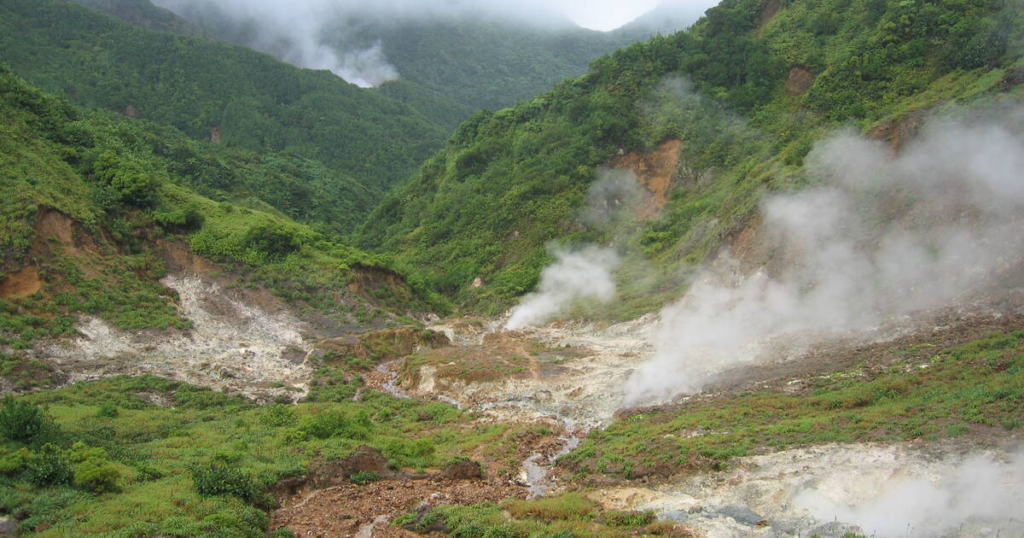
Morne Trois Pitons National Park is a UNESCO World Heritage Site located in central Dominica. This expansive park features a diverse range of natural wonders, including volcanic landscapes, lush rainforests, and spectacular geothermal features. Highlights of the park include the Boiling Lake, a large flooded fumarole with steaming, bubbling water, and the Valley of Desolation, a volcanic area with colorful hot springs and sulfurous vents. The park offers numerous hiking trails and opportunities to explore its unique geological formations.
2. The Boiling Lake
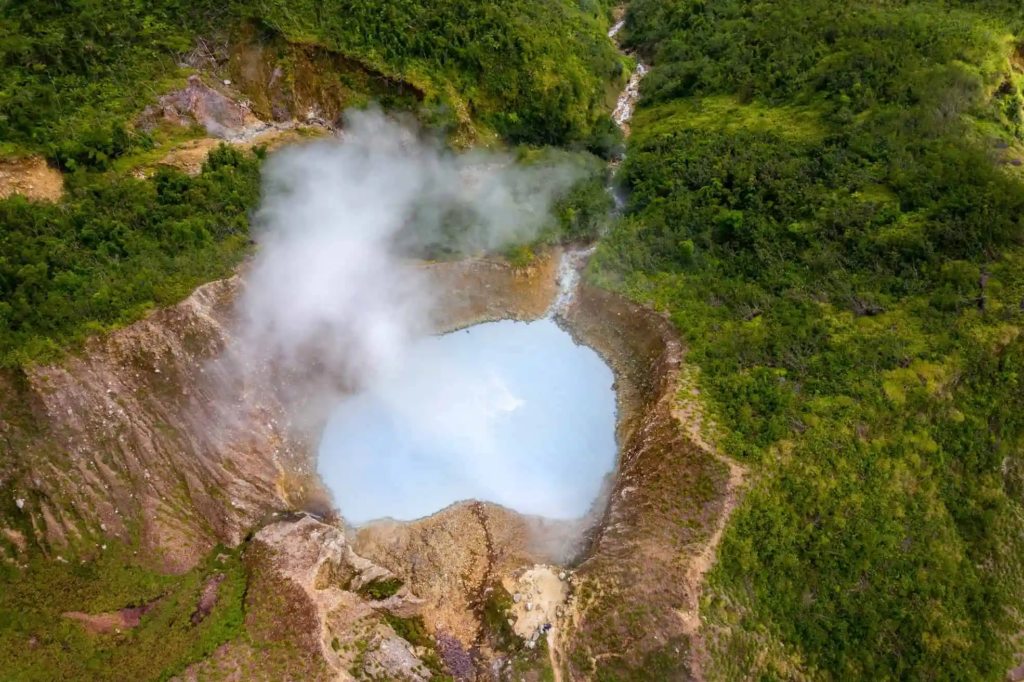
The Boiling Lake is one of Dominica’s most famous natural attractions, located within the Morne Trois Pitons National Park. This impressive lake is the world’s second-largest hot spring and is known for its turbulent, boiling water. The lake is surrounded by rugged terrain and is accessible via a challenging hiking trail that provides stunning views of the surrounding landscape. The Boiling Lake is a testament to Dominica’s geothermal activity and adds to the island’s allure as a natural wonder.
3. Trafalgar Falls
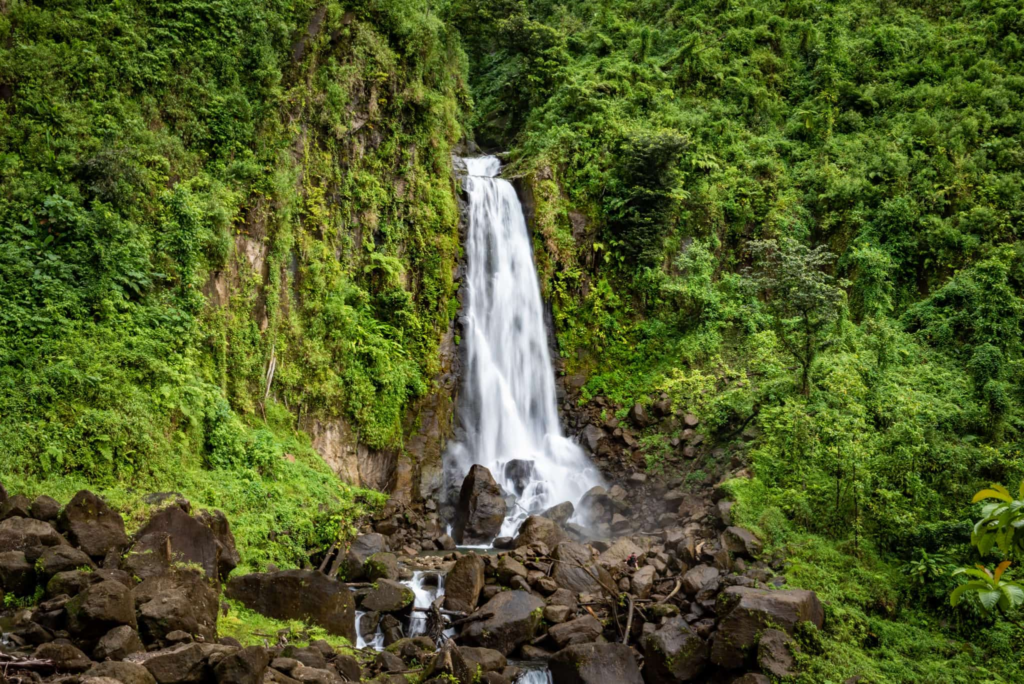
Trafalgar Falls is a picturesque waterfall located near the village of Trafalgar in Dominica. The falls consist of two distinct cascades: Mother Falls and Father Falls, named for their contrasting sizes and appearances. The falls are surrounded by lush vegetation and can be reached via a scenic hike through a tropical forest. Visitors can enjoy the breathtaking views, take a refreshing dip in the natural pools, and experience the serene beauty of this iconic natural landmark.
4. Emerald Pool
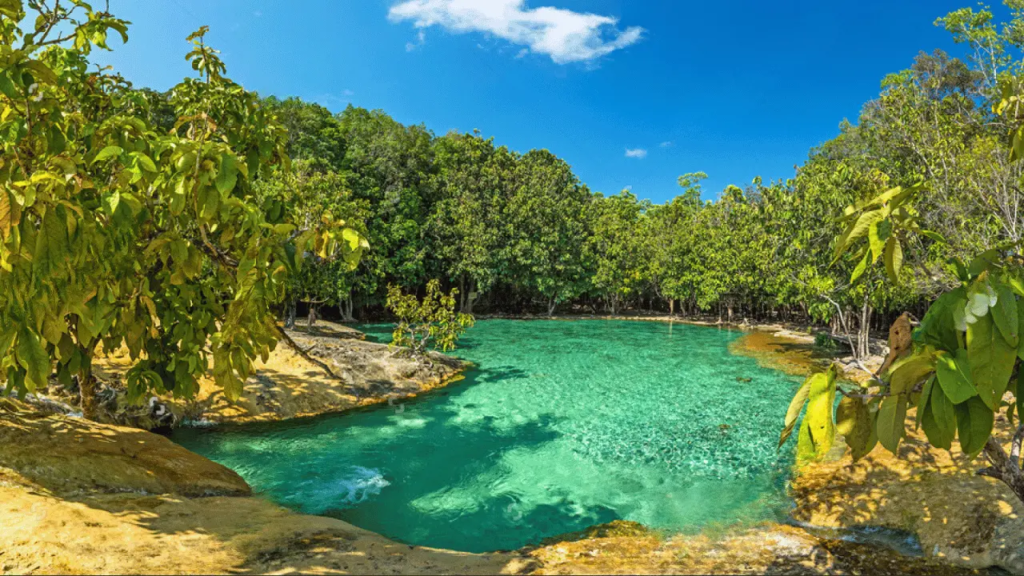
Emerald Pool is a stunning natural attraction situated in the Morne Trois Pitons National Park. This enchanting pool is fed by a waterfall that cascades into a clear, emerald-green basin. The pool is surrounded by dense rainforest, creating a tranquil and picturesque setting. Visitors can reach the Emerald Pool via a short, easy hike and enjoy a refreshing swim in its cool, inviting waters. The area around the pool is also ideal for birdwatching and appreciating the island’s natural beauty.
5. Kalinago Territory
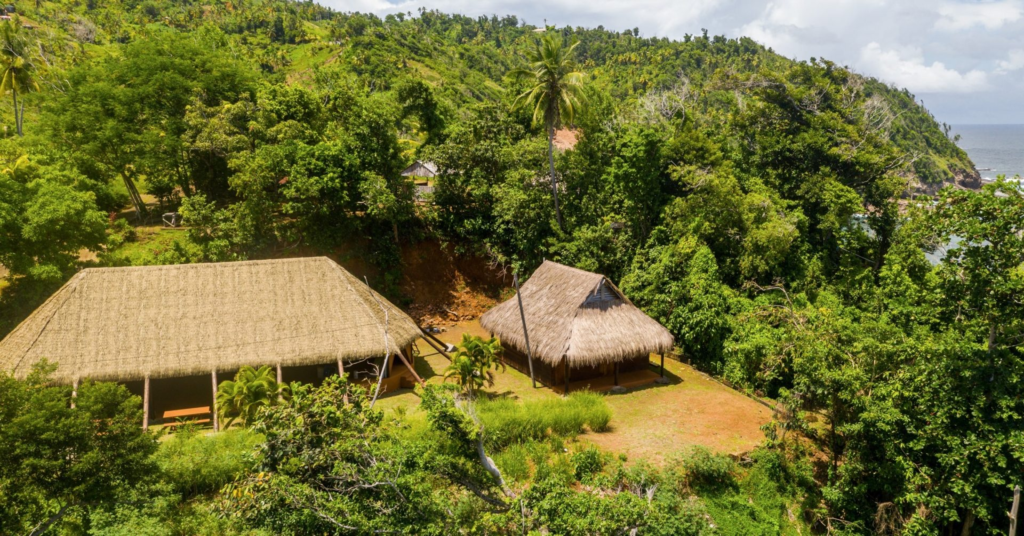
Kalinago Territory is a unique cultural and historical site on the eastern coast of Dominica. This area is home to the Kalinago people, the island’s indigenous inhabitants, who have preserved their traditional way of life and cultural practices. Visitors can explore the Kalinago village, learn about the community’s history, and experience traditional crafts, cooking, and storytelling. The Kalinago Territory offers an insightful glimpse into the island’s indigenous heritage and cultural diversity.
6. Roseau

Roseau is the capital city of Dominica and serves as the island’s administrative and commercial center. The city is known for its vibrant atmosphere, historic architecture, and local markets. Visitors can explore the city’s charming streets, visit the Dominica Museum, and experience the lively culture of the capital. Roseau is also a gateway to various natural attractions and offers a range of dining, shopping, and entertainment options.
7. Boiling Lake Trail
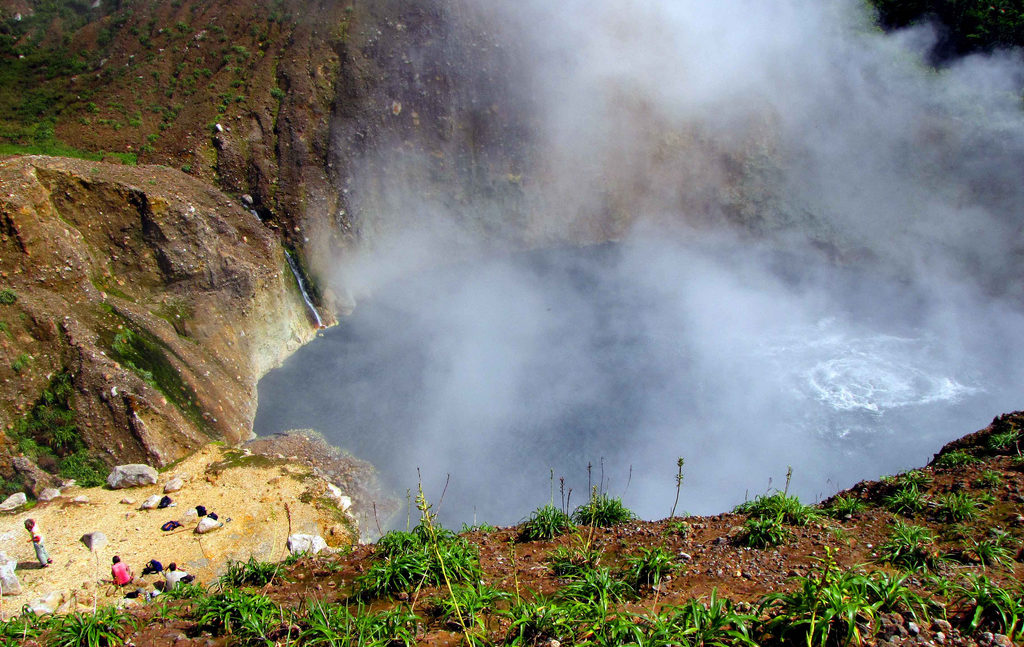
Boiling Lake Trail is a challenging hiking route that leads to one of Dominica’s most iconic natural features, the Boiling Lake. The trail offers a strenuous yet rewarding adventure through the island’s rugged terrain, with stunning views of volcanic landscapes, lush rainforests, and geothermal features along the way. Hikers will encounter diverse flora and fauna, cross suspension bridges, and navigate rocky paths to reach the lake and witness its dramatic, bubbling waters.
8. Scott’s Head Village
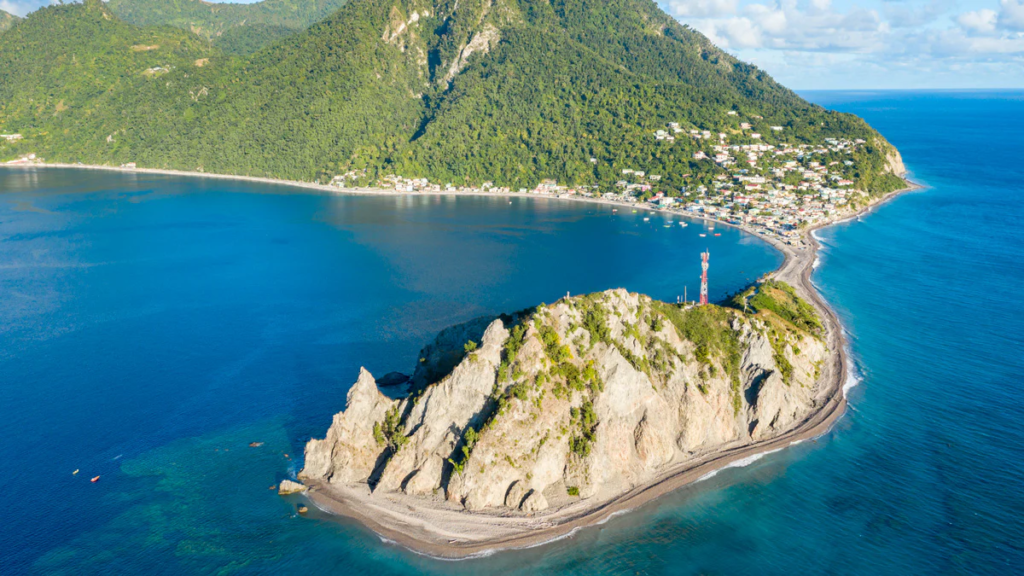
Scott’s Head Village is a picturesque coastal village located at the southern tip of Dominica. The village offers stunning views of the Caribbean Sea and the island’s volcanic coastline. Visitors can enjoy snorkeling and diving in the nearby marine reserve, which features vibrant coral reefs and diverse marine life. Scott’s Head is also known for its charming atmosphere, local eateries, and opportunities to experience the island’s laid-back coastal lifestyle.
9. Dominica Botanical Gardens

Dominica Botanical Gardens is a serene and well-maintained garden located in Roseau. The gardens feature a diverse collection of tropical plants, including native species and exotic varieties. Visitors can stroll through beautifully landscaped areas, enjoy the peaceful ambiance, and learn about the island’s flora. The botanical gardens also serve as a center for conservation and education, promoting the preservation of Dominica’s unique plant life.
10. Soufrière

Soufrière is a small town located on the southwestern coast of Dominica. The town is known for its scenic beauty and proximity to natural attractions such as the Sulphur Springs and Soufrière Volcano. Visitors can explore the town’s charming streets, relax in natural hot springs, and enjoy panoramic views of the surrounding landscape. Soufrière is a gateway to various outdoor activities and offers a peaceful retreat amidst Dominica’s natural splendor.
Culture
Dominica’s culture is deeply rooted in its indigenous heritage, African influences, and Caribbean traditions. The island’s cultural landscape is marked by vibrant music, dance, and festivals that reflect its diverse history and traditions. Carnival, celebrated in February or March, is one of the most significant cultural events, featuring colorful parades, energetic music, and lively dance performances. The festival showcases Dominica’s artistic expression and community spirit.
Cuisine in Dominica reflects the island’s agricultural abundance and culinary heritage. Traditional dishes include Mountain Chicken (a local term for a type of frog), Callaloo Soup, and Saltfish and Dumplings. The island’s cuisine is known for its use of fresh, locally sourced ingredients and bold flavors. Dominica’s culinary scene also includes a variety of international influences, catering to diverse tastes and preferences.
Festivals
Carnival in Dominica is a vibrant celebration of the island’s cultural heritage, featuring elaborate costumes, lively music, and energetic dance performances. The festival takes place in February or March and is characterized by its festive atmosphere, colorful parades, and community spirit. Carnival is a time of joy and creativity, showcasing the island’s artistic talent and cultural traditions.
The Nature Island Festival, held annually in October, celebrates Dominica’s natural beauty and environmental conservation. The festival includes activities such as eco-tours, educational workshops, and cultural performances. It aims to raise awareness about environmental issues and promote sustainable practices while highlighting the island’s rich biodiversity and natural wonders.
Economy
Dominica’s economy is primarily driven by agriculture, tourism, and services. Agriculture plays a crucial role in the island’s economy, with the cultivation of crops such as bananas, cocoa, and tropical fruits being important for both local consumption and export markets. The agricultural sector supports many residents and contributes to the island’s food security and economic stability.
Tourism is another significant sector, with Dominica’s natural attractions and eco-friendly initiatives drawing visitors from around the world. The island’s emphasis on sustainable tourism and environmental preservation has helped to establish it as a premier destination for nature lovers and adventure seekers. The government continues to invest in infrastructure and conservation efforts to support the growth of the tourism industry and protect the island’s unique natural resources.
Cuisine
Dominica’s cuisine is a flavorful blend of Caribbean and international influences, reflecting the island’s agricultural abundance and culinary heritage. Mountain Chicken (a local term for a type of frog) is a traditional delicacy, often prepared with spices and served in a stew. Callaloo Soup, made from leafy green vegetables, is another popular dish that highlights the island’s fresh, locally sourced ingredients.
In addition to traditional dishes, Dominica’s culinary scene includes a variety of international options, catering to diverse tastes and preferences. Visitors can enjoy a range of dining experiences, from local eateries serving traditional fare to upscale restaurants offering gourmet cuisine. The island’s vibrant food culture reflects its rich history and multicultural influences.
Top Eight Most Famous Food

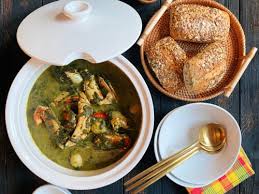
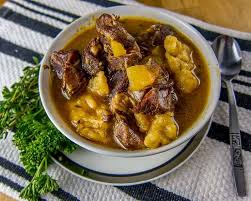
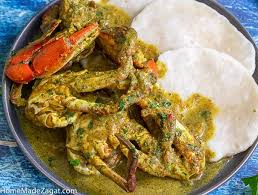
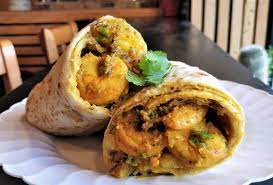
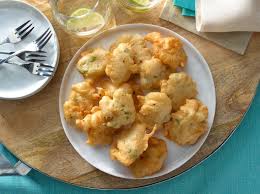

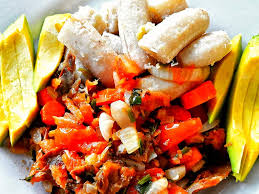
Ten Interesting Facts About Dominica
- Dominica is known as the “Nature Island” due to its rich biodiversity and natural beauty.
- The island covers an area of approximately 754 square kilometers.
- Morne Trois Pitons National Park is a UNESCO World Heritage Site and features diverse natural wonders.
- The Boiling Lake is the world’s second-largest hot spring and a major geothermal attraction.
- Trafalgar Falls consists of two distinct cascades, known as Mother Falls and Father Falls.
- Emerald Pool is a stunning natural pool surrounded by lush rainforest.
- Kalinago Territory is home to the island’s indigenous Kalinago people and offers insights into their culture.
- Roseau is the capital city and serves as the island’s administrative and commercial center.
- The Boiling Lake Trail is a challenging hike that leads to one of Dominica’s most iconic natural features.
- Soufrière is known for its scenic beauty and proximity to natural attractions like the Sulphur Springs.
Conclusion
Dominica, with its breathtaking landscapes, rich cultural heritage, and commitment to environmental preservation, offers an unparalleled experience for travelers seeking adventure and natural beauty. From the dramatic volcanic landscapes of Morne Trois Pitons National Park to the serene beauty of Emerald Pool, the island provides a wealth of opportunities to explore and appreciate its unique offerings. Dominica’s vibrant culture, flavorful cuisine, and diverse natural attractions make it a destination that captures the essence of the Caribbean’s natural splendor.

